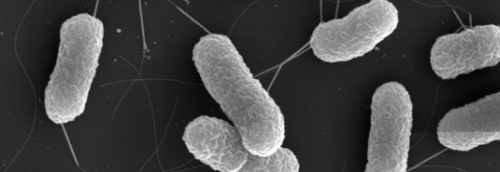Discovery of a new mechanism used by pathogenic bacteria to disable host defenses

Ludwig Maximilian University of Munich researchers report the discovery of a new mechanism used by pathogenic bacteria to disable host defenses: Addition of a sugar residue at a specific position within the translation factor EF-P boosts the production of toxic proteins.
The translation factor EF-P plays an important role in the regulation of protein synthesis. Depending on the precise amino-acid sequence specified by the RNA blueprints that direct protein synthesis, the cell's "protein factories" – known as ribosomes – sometimes stall before a given protein is complete. EF-P is required to restart the production line by relieving this kind of premature halt. Studies carried out on a variety of pathogenic bacteria have previously shown that the restart process is crucial for the completion of proteins that are deleterious to the infected host. Thus, strains that lack EF-P turn out to be significantly less virulent than those in which the protein is functionally competent. Furthermore, EF-P can trigger the resumption of protein synthesis at a stalling site only if it has been chemically modified at a certain position by specific bacterial enzymes. "We have now discovered a previously unknown modification mechanism that is utilized by bacteria to activate EF-P," says LMU microbiologist Kirsten Jung.
Addition of an activating sugar residue
Jung's team has shown that, in a number of clinically significant pathogens, EF-P is activated by the addition of a sugar unit (monosaccharide) called rhamnose to the amino acid arginine located at a specific position in this protein. In chemical terms, this arginine is "rhamnosylated". "To the best of our knowledge, this is the first time that anyone has detected this particular form of protein modification in bacteria," says Jürgen Lassak, first author on the new study. EF-P is not restricted to bacteria. Related versions of the protein are also found in the Archaea, as well as in eukaryotes. In a previous collaboration with the group led by Daniel Wilson at LMU's Gene Center, Jung and her colleagues had elucidated the mechanism of activation of EF-P in the enterobacterium Escherichia coli, which is a part of microbiota in humans. Their latest cooperative project, carried out under the auspices of the Excellence Cluster CIPSM with which both Jung and Wilson are affiliated, builds upon and supplements the earlier work. "In E. coli, EF-P is modified in quite a different way, and the enzymes necessary to catalyze the reaction are found in only 25% of all bacterial species. So the new study significantly extends the range of bacteria in which the mode of activation of EF-P is now known," Jung explains.
Possible target for antibiotics
In light of the ever increasing incidence of multiply resistant strains among pathogenic bacterial species, new classes of antibiotics are urgently needed, and the new findings suggest that the rhamnosylation reaction might offer a point of attack for novel antibacterial drugs. "Arginine rhamnosylation occurs in clinically relevant bacterial pathogens, such as Pseudomonas aeruginosa and Neisseria, which often display resistance to several different classes of antibiotic," Lassak points out. "If we can find a way to specifically inhibit this mechanism, this would certainly provide a considerable stimulus to the search for new therapeutic agents." The researchers plan to follow up this lead, and will also investigate whether proteins other than EF-P are subject to arginine rhamnosylation. Looking farther into the future, Jung speculates that "it might even be possible to exploit this modification mechanism in the context of synthetic biology, to modify the biochemical properties and physiological functions of proteins in useful ways."
More information: "Arginine-rhamnosylation as new strategy to activate translation elongation factor P" Nature Chemical Biology (2015) DOI: 10.1038/nchembio.1751
Journal information: Nature Chemical Biology
Provided by Ludwig Maximilian University of Munich


















